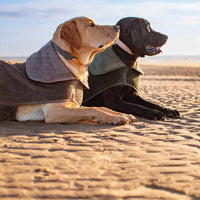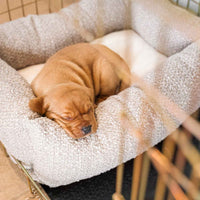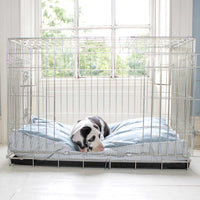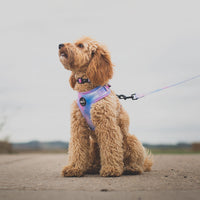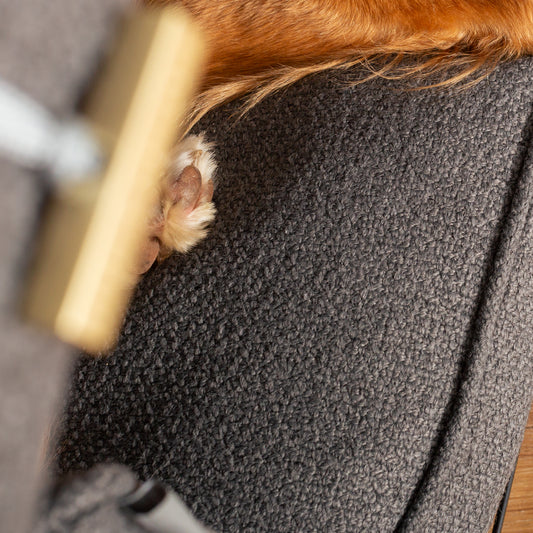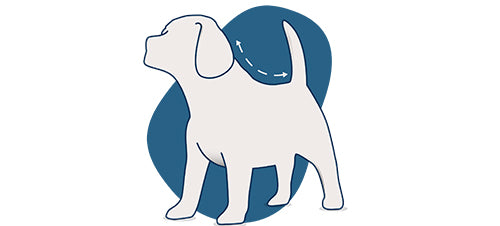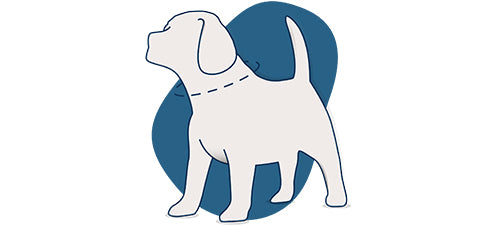Dog grooming is generally considered the hygiene care and cleaning of your dog, as well as the process of enhancing their physical appearance (sometimes for shows and competitions) - this may be done by yourself at home, or hiring a professional dog groomer.
Your dog may not look particularly scruffy, but grooming them provides many benefits for them which may not be obvious immediately. Grooming is great for you pup because it ensures your dog’s skin can breathe and it reduces the amount of grease left in their coat. Grooming your dog will keep their coat healthy and strong and removes all of the dead and old, damaged hair.
In this article, we explore the benefits of grooming your dog, and why it’s important to keep them clean and groomed.
What Is Involved In Dog Grooming?

Typically in a dog grooming session, whether at home, or at a professional groomers, your dog will be:
- Bathed & washed with the correct shampoo for their coat
- Brushed
- Have their eyes and ears cleaned
- Trimming of their nails
- Teeth cleaned and brushed
- Haircut (if needed)
Following the above on a regular basis will ensure your dog is clean and won’t run into any unnecessary skin problems, and you’ll be able to check for any sores, fleas, or general lumps, bumps or scratches. Too much grease can block your dogs pores which will lead to irritation and skin problems that may cause your dog discomfort and illness. Brushing your dog also gives your dog a nice massage which promotes healthy blood circulation. It’s also great bonding time for you and your pup and it should be a soothing experience for you both.
If you are grooming at home, don’t forget to check between their paws, where mud and grass seeds can gather and clump which will cause your dog a lot of discomfort.
Why Is Dog Grooming Important?

When your dog moults, their loose hair can get tangled which causes matting. If your dog isn’t brushed regularly the matting can become worse, pulling at your dogs skin which can create huge sores which may get infected. You need to make sure you’re checking and grooming your dogs fur regularly to avoid any trips to the vets caused by not being groomed properly.
Try to make the grooming and handling experience pleasant by rewarding your dog with praise (and treats if necessary). It’s best to groom your dog from an early age so they can make positive associations and decide what they do and don’t enjoy.
How Often Should You Groom Your Dog?

It’s good practice to brush your dog at least 1-3 times a week, and bathing at least once every 1-2 months, however it does depend on yours (and your dogs) lifestyle. It’s important you research the grooming needs of your dogs specific breed as every breed will have different recommendations for care of their fur.
- Long haired breeds (such as long haired Yorkshire Terriers) will need brushing daily to keep their coat healthy.
- Medium haired breeds (such as some spaniels and German Shepards), will need brushing a few times a week to remove dead hair.
- Short haired breeds (such as Labradors) should only need brushing once a week.
Your dog may naturally wear their nails down, however you may need to clip them if they don’t walk on tarmac or if they have reduced mobility. You can trim your dogs nails at home with specialised clippers.
It’s also important to use the correct comb/brush for your dogs fur, if you’re not sure which will be best for your dog, check with your veterinarian or groomer, they’ll be able to advise on what’s suitable.
How Long Does Dog Grooming Take?
With each breed, the time taken for a full groom will vary. Your dogs age, coat condition, size and temperament will all effect the time the groom may take. Your professional groomer will generally be quicker and will usually take anywhere from an hour to two hours, however this may be longer. The more intricate the style of cut will also effect the time it takes for the groom.


























